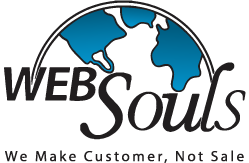If you’re looking for web development services in the UK, then you must know a bit about web development yourself in order to find a reliable and dependable web development company near you.
In this context, we’re here to help you understand the world of web development.

What is Web Development?
In a wide sense, web development refers to all of the activities, changes, and operations necessary to design, maintain, and manage a website to guarantee optimum performance, user experience, and speed.
There are two types of web development:
- Frontend
- Backend
Frontend Development:
The section of a website with which the user interacts directly is referred to as the front end. It is also known as the application's "client-side."
Backend Development:
The server side of a website is referred to as the backend. It is a section of the website that visitors cannot view or interact with.
It is the part of the program that has no direct touch with the users. It is used to organize and store data.
Why is Web Development Important?
Are you looking for web development services in the UK to get your business website developed?
If not, then you should. Because it’s better late than sorry!
The internet has evolved into the world's principal gateway and means of research, connection, education, and entertainment.
Given the growing amount of Internet users, it's no wonder that web development is a growing sector.
Web developer employment is predicted to expand by 13% between now and 2030, far faster than most other technological jobs.
Website development is a method of making people aware of a company's services and/or goods. Finding a web development company in the UK may help you a lot in presenting your business in the world of web.
About The Web Development Methodology
The best web development services in UK follow a proper web development methodology whenever the develop a website.
Want to know what’s that?
The subsequent sections provide an overview of the web development process as well as a quick introduction to the most prevalent languages and CMS (Content Management Solution) solutions.
1. Have a Plan Ready
To establish a strategy for your website, you must first engage with teams and employees within your firm. Ask yourself the following questions:
- What is your website's purpose?
- Who is your target audience?
- What kind of website are you creating?
- What kind of material do you want to publish?
- What is the goal of this content?
- What is your budget?
- Make a wireframe.
Every excellent website begins with a plan.
This is referred to as a wireframe by developers.
It doesn't have to be an official document; it's just a vision for your site that will provide guidance and a starting point for both you and your developer(s).
You may use a tool or sketch it on a whiteboard.
Wireframes are purely visual tools that can assist you in determining where text and graphics will appear on particular websites.
To see how your material will appear on the front end, utilize blank boxes and "dummy text."
2. Create a Sitemap
The next step is to construct a sitemap.
A sitemap provides a developer with the information required to match your vision, just as a business plan does for a prospective investor.
You may construct your sitemap on your own or with the assistance of your developer (s). In this phase, you will make decisions regarding the pages and content.
If you have an SEO and/or content strategy team, their advice will be invaluable in terms of linking structure and page categorization.
3. Website Code
Writing code is the next phase in the web development process.
Developers will employ many coding languages for the front-end and back-end of websites, as well as for other site capabilities such as design, interaction, and so on.
These several languages collaborate to construct and operate your website.
CSS
CSS (Cascading Style Sheets) was created in the late 1990s. It improves the overall "look" of websites by adding design elements such as font, colors, and layouts.
It enables developers to modify your website to reflect the style you envisioned for your site, and CSS, like HTML5, is browser-independent.
HTML
The coding used to build a web page and its content is known as HTML (Hypertext Markup Language).
For instance, content may be organized into paragraphs, a list of bulleted points, or graphics and data tables.
JavaScript
JavaScript is a programming language that is used all over the globe by developers to produce dynamic and interactive online content such as applications and browsers.
4. Backend & Frontend
The front end displays its capabilities thanks to the data that is managed and stored in the back end. It is composed of two primary parts, which are:
- Databases
- Servers
Whereas, the front-end functionality is essential because it determines what your site's visitors, customers, and other users will see and how they will interact with your website.
JavaScript, HTML, and CSS are the three languages used in front-end programming, often known as client-side development.
It also controls components like navigation, placement, typography, and fonts, as well as browser compatibility and responsiveness.
This section will be more reflective of your original site concept and the elements that you put in your wireframe.
5. Domain Name
By now, an IP address will have been assigned to your website.
In addition to this, it requires a domain name, which is a name for the website that is easy to remember and may be used by your visitors to locate your website.
WordPress and Squarespace are just two examples of website builders and hosting providers that also offer the option to acquire a domain name.
6. Unveil the Website
After you have registered a domain name and connected it to your web server, you are nearly ready to make your work available to the public on the internet.
Before you go ahead and "flip the switch" and make your website publicly accessible, you should keep in mind that you still need to do a comprehensive test of your site to check for any bugs, optimize it for search engine optimization, and perform a final check.
Also, make sure the web hosting services and the hosting plan that you’ve chosen is reliable and a good fit for your website. Because, there’s no use having a perfectly developed and well-designed website if it would only annoy your visitors with slow loading speed or loading errors.
We hope this guide gave you an overview of web development services and helped you understand how to plan out the process.
24 May 2022
 GBP (£)
GBP (£)
 USD ($)
USD ($)







